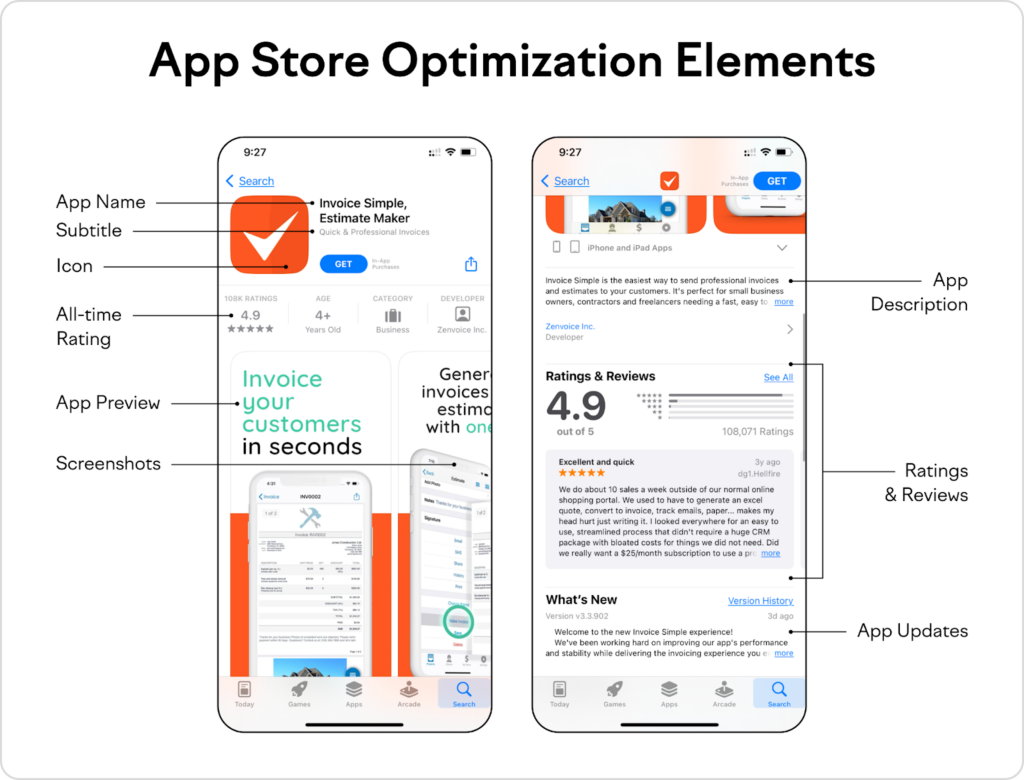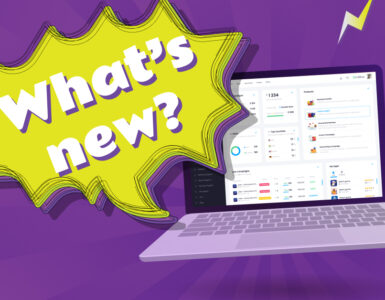In the world of apps, one of the biggest challenges is turning visitors into active downloads. It’s a crucial step towards success, yet it often proves to be more complicated than expected. This is where enhancing your conversion rates becomes essential. Just picture this scenario: you have users exploring your app, intrigued by what it offers, but how do you transition them from just browsing to actually hitting that download button? It’s a puzzle many app owners face. In this article, we’re diving deep into this topic, exploring effective strategies to tackle it head-on. We’ll break down the process into simple steps, providing actionable tips to help you increase those download numbers. So, if you’re eager to see your app thrive in the competitive market, stay tuned for some practical insights and advice!
To begin with, it is important to emphasize why increasing conversion rates is so essential for your app’s success. Think of it like this: every visitor to your app represents a potential user, someone who could benefit from what your app offers. But until they actually download and start using it, they remain just visitors. So, the higher your conversion rate, the more of these potential users you’re able to convert into active users.
Now, you might be wondering, what exactly influences a visitor’s decision to download an app? Well, it boils down to a few key factors. Firstly, there’s the app’s value proposition – what sets it apart from others in the market and why should someone choose to download it? This could be anything from unique features to solving a particular problem more effectively than competitors.
Secondly, the user experience plays a significant role. If your app is intuitive, visually appealing, and easy to navigate, visitors are more likely to be impressed and motivated to download it. On the flip side, if the user experience is confusing, they’re likely to bounce off without a second thought. Here we can also remind about the importance of app reputation, both app rating and reviews as they show the actual feedback from already existing users who interact with the application and can share what they think. Taking this factor into consideration, it is important to mention that working with app reputation is crucial as this influences the conversion rate considerably despite the fact that most developers think that no one reads the reviews. Do not forget to reply the user feedback as well as implement the app fixes based on the reviews. By the way, you can read more about working with app reputation in this article.
Lastly, your app’s visibility also matters. Even if you have a fantastic app with a great value proposition and seamless user experience, if people can’t find it, they can’t download it. This is where your app’s marketing and promotional efforts come into play, ensuring that it’s visible to your target audience across various channels. That’s where ASO and keyword promotion already play the most important role helping your app be noticeable on the store using keyword optimization and promotion. Almost in all the cases when we talk about app marketing, we talk about ASO and keyword promotion as the main steps before any other marketing actions if you would like to attract organic traffic. This article will tell you how to make sure that you are going the right way with ASO and what metrics pay attention to including the conversion rate.
With these factors in mind, let’s delve into some practical strategies to boost your app’s conversion rates.
1. Optimize Your App Store Listing
Your app store listing is often the first interaction potential users have with your app. Make sure your app’s title, icon, screenshots, and description are compelling and accurately represent what your app offers. Highlight the key features and benefits that set your app apart, and use clear, concise language that resonates with your target audience.
In addition to the visual elements of your app store listing, such as the title, icon, and screenshots, don’t overlook the importance of your app’s description. This is where you have the opportunity to provide more detailed information about your app and persuade potential users to download it.
When writing your app description, focus on communicating the value proposition of your app and addressing the needs and pain points of your target audience. Clearly explain what problem your app solves or what benefits it provides, and why users should choose your app over competing alternatives. Use language that is easy to understand and avoid jargon or technical terms that might confuse or alienate potential users.
Lastly, make sure to optimize your app description for search engines by including relevant keywords and phrases that potential users are likely to use when searching for apps like yours. Conduct keyword research to identify high-traffic keywords with low competition, and strategically incorporate them into your app description to improve its visibility and rank higher in search results.
vOverall, optimizing your app store listing is essential for increasing conversion rates and driving more downloads of your app. By paying attention to every detail of your listing and crafting a compelling and persuasive description, you can effectively communicate the value of your app and convince potential users to take the next step and download it.
2. Work with ASO on a permanent basis
When it comes to working with App Store Optimization effectively, it’s all about continuously refining your approach. Beyond just identifying relevant keywords and phrases, you need to understand the dynamics of the app store ecosystem and adapt your strategy accordingly.
Firstly, conducting thorough keyword research is a must. This includes not only finding keywords and phrases relevant to your app but also evaluating their search volume and competitiveness. Aim for a mix of high- and middle-volume keywords to maximize visibility and lower-volume, more niche keywords to target specific user segments.
Once you find your target keywords, add them to app’s text metadata, depending on the store you work with. However, it’s essential to keep a balance between optimization and readability – stuffing keywords unnaturally can detract from the user experience and even harm your app’s visibility as Google Play, for example, may not index the application for the search requests if detects the keywords spam.
Regular monitoring and analysis of your app’s performance metrics are also critical components of an effective ASO strategy. Pay close attention to key indicators such as download volume, conversion rates, and keyword rankings. By tracking these metrics, you can identify trends and ways for improvement, and make data-driven optimizations to enhance your app’s conversion rates.
Additionally, don’t underestimate the importance of A/B testing in ASO. Test different variations of your app store listing, including changes to the title, description, screenshots, and even the icon, to see which combinations give the best results. In such a way, you can continuously improve your app’s visibility and drive more downloads.
In summary, effective App Store Optimization (ASO) requires a combination of thorough research, strategic implementation, and ongoing optimization. By staying staying informed about industry trends, and being willing to experiment and iterate, you can maximize your app’s visibility, attract more users, and ultimately drive higher conversion rates.
3. Implement Social Proof (Work with App Reputation)
First and foremost, encourage your satisfied users to share their positive experiences by leaving reviews and ratings on the app store. These reviews make other users trust when evaluating whether to download your app. Prompt happy users to leave feedback by incorporating gentle reminders within your app, such as a post-interaction message or a dedicated feedback section.
Once your app receives reviews, don’t let them gather dust in the depths of the app store. Instead, showcase them prominently in your marketing materials. By putting social proof front and center, you’re signaling to potential users that your app is loved by others and worth their consideration.
But social proof isn’t just about quantity – it’s also about quality. While positive reviews are valuable, don’t shy away from answering negative feedback constructively. Respond promptly to user concerns, demonstrating your commitment to delivering a positive user experience.
Ultimately, app reputation acts as a powerful trust signal for potential users, assuring them that your app delivers on its promises and is worthy of their download. By actively cultivating and showcasing social proof, you can build trust, credibility, and confidence in your app, driving higher conversion rates and fostering long-term success in the competitive app market.
4. Offer Promotions
Offering different promotions can be a game-changer when it comes to making visitors to download your app. But what types of promotions you can offer, and how you can promote them effectively to drive conversions?
One popular strategy is to offer limited-time discounts or promotional pricing for your app. Whether it’s a percentage off the regular price or a special offer for new users, discounts can create a sense of urgency and incentivize users to take action. Consider running seasonal or holiday-themed promotions.
Another approach is to offer exclusive content or features as incentives for downloading your app. This could include access to premium content, special in-app features or functionality, or early access to new features or updates. By offering something unique that users can’t get elsewhere, you’re providing added value and giving them a compelling reason to download your app.
Additionally, consider implementing a rewards program to incentivize app downloads and usage. Offer users points, discounts, or other rewards for downloading the app, completing certain actions (such as making a purchase or referring friends), or achieving levels within the app. Rewards programs not only encourage downloads but also create long-term engagement and loyalty among your user base.
Once you’ve decided on your promotions, it’s crucial to promote them effectively to maximize their impact. Leverage your marketing channels – including social media, email newsletters, to generate excitement among your target audience.
Finally, don’t forget to track and measure the effectiveness of your efforts to see what’s working and what’s not. Monitor key metrics such as download volume, conversion rates, and user engagement to assess the impact of your promotions and identify areas for improvement.
In summary, offering promotions is a powerful strategy for driving app downloads and conversions. Whether it’s discounts, exclusive content, or rewards programs, providing value to users can help differentiate your app and attract more users.
SUM UP
To sum up, it is needless to say that conversion rate is the crucial metric for your application showing the success of all the marketing efforts you proceed with. Together with the number of downloads and active users, conversion rates should be analyzed permanently to make sure that you are going the right way with ASO, keyword promotion and marketing in general. Anyway, if you need any help with conversion rate, do not hesitate to contact us so we could help to analyze your app keyword optimization and create the strategy to increase the ranks to the TOP of the search list.
























